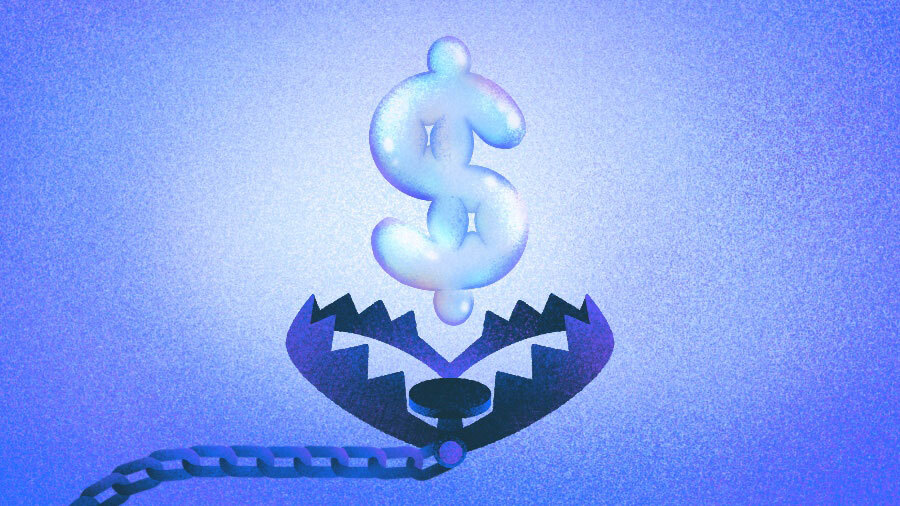By Dan Gray
With every new wave of technology, there is a corresponding bubble in private markets. Entrepreneurs join the gold rush, chasing the edge offered by innovation, and investors lend out picks and shovels to anyone who promises to deliver outsized returns.
Most will fail. This is the normal for venture investing and a natural product of the high failure rate at early stages.

Consider the dotcom bubble. After a period of historically low interest rates, money poured into internet startups through venture capital. When interest rates rose again and capital dried up, many of these companies found themselves with unsustainable economics and were forced to close down.
This is a pattern that has replayed throughout humanity’s history. From “railway mania” in the U.K. in the 1840s, to Japan’s “bubble economy” in the 1980s, low interest rates and irrational enthusiasm produced businesses that simply weren’t viable in normal conditions.
While we have exited the ultra-low rate era, returning to more normal interest rates of around 5% (the U.S. averaged 5.42% from 1971 until 2023), it’s worth noting that VC firms are still sitting on a huge amount of dry powder from that period.
Combined with the incredible enthusiasm around AI, evident in some of the high-profile funding rounds, there are clear signs of a bubble.
The larger that bubble grows, the more the transfer of wealth in venture capital becomes a net-negative for the majority. Considering that, and the already potent hangover from VC excesses in 2021, you would imagine that we’d all be a bit more cautious.
Crude comparisons allow prices to inflate
In every instance of a bubble, the root cause is the simple idea that if a particular investment seems to be lucrative in one instance, the same will be true elsewhere. For startups, the term is “comparables” — the practice of pricing an investment by looking at similar investments.
The cruder the comparison, the wider the net is cast, and the faster a bubble develops.
Throughout 2021, when deals were being completed at a record pace, investors started relying more on comparables as a shorthand way to price rounds. Specifically, multiples on revenue (similar to price per square foot for real estate) became the go-to approach. This has a number of problems, including the huge incentive to manipulate revenue reporting, and suffers from being particularly low-resolution.
For example, fintech startups were understood to be priced based on multiples of up to 30x, while ignoring a lot of scrutiny on the underlying business model, profitability and the specific sector of finance.
The importance of specificity with valuation
Multiples shouldn’t be used simply to justify investor appetite for a technology, but to reflect a similar estimation of future potential. Valuation, after all, is always based on the future.
In simpler terms, multiples should be considered as a reflection of business model and industry, not technology. For example:
- An AI SaaS tool using the revenue multiple of a hot LLM R&D company might reflect investor appetite to a degree, but it says nothing meaningful about the value of the company.
- An AI SaaS tool in freight logistics using the multiple from another company in that industry would be properly reflecting the calculations about market size, growth potential and risk.
The purpose is to offer up a price which aims to reflect the value of the investment in terms of exit trajectory, not a price which fits investor hype and momentum behind a technology at that particular moment. Focusing too much on the latter is how we end up in procyclical spirals, inflating markets and ultimately crashing them.
Dan Gray is an adviser supporting impact entrepreneurs in emerging markets, and is the head of marketing at Equidam, a platform for startup valuation.
Illustration: Dom Guzman
Search less. Close more.
Grow your revenue with all-in-one prospecting solutions powered by the leader in private-company data.

Stay up to date with recent funding rounds, acquisitions, and more with the Crunchbase Daily.



![Illustration of a suitcase stuffed with money. Megafunds [Dom Guzman]](https://news.crunchbase.com/wp-content/uploads/Megafunds-470x352.jpg)
![Illustration of a man sitting on a huge pile o' money. [Dom Guzman]](https://news.crunchbase.com/wp-content/uploads/Giant_Funding-470x352.jpg)
![Illustration of agentive AI brain - Europe - Quarterly. [Dom Guzman]](https://news.crunchbase.com/wp-content/uploads/Agentive_AI_europe-470x352.jpg)
![Illustration of a guy watering plants with a blocked hose - Global [Dom Guzman]](https://news.crunchbase.com/wp-content/uploads/quarterly-global-3-300x168.jpg)
67.1K Followers